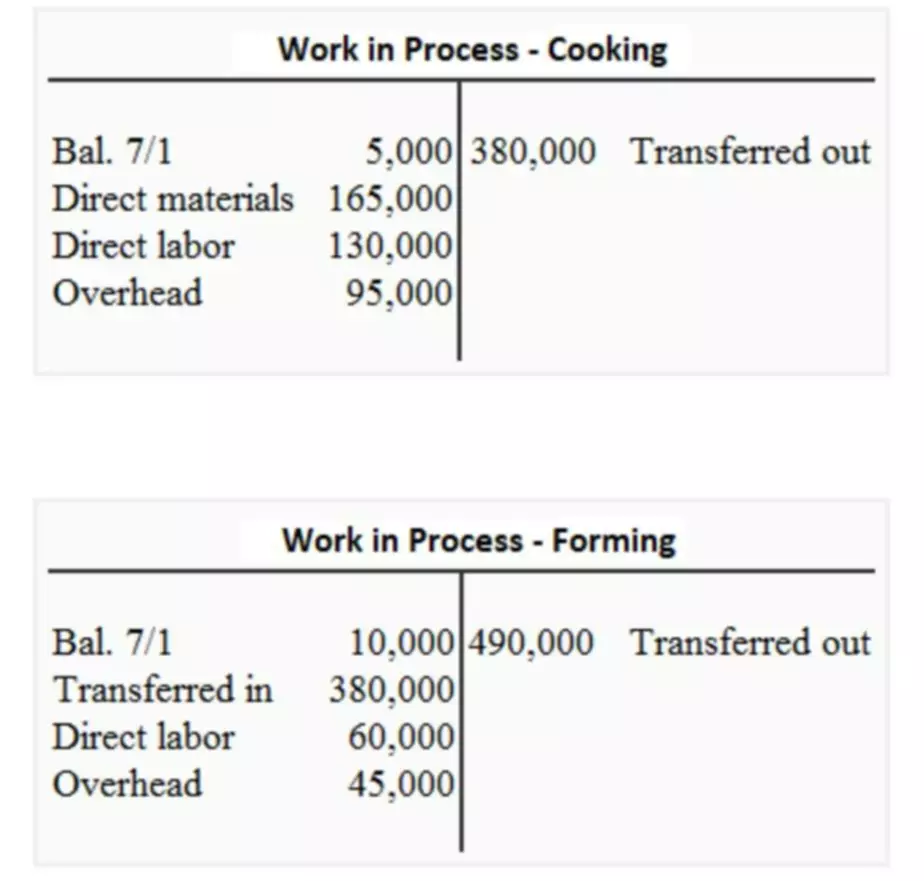Content
© 2021 University of Alaska Anchorage UA is an AA/EO employer and educational institution and prohibits illegal discrimination against any individual. Learn more about our Accessibility policy and how to provide feedback. Projects where the principal focus is the preparation and production of manuals and large reports, books, or monographs .
Billings and charges to federal grants and contracts must be adjusted if the final rate varies from the provisional rate. If the final rate is greater than the provisional rate and there are no funds to cover the additional indirect costs, the organization may not recover all indirect costs. Conversely, if the final rate is less than the provisional rate, the organization will be required to pay back the difference to the funding agency. Predetermined – an indirect cost rate, applicable to a specified current or future period, usually the organization’s fiscal year.
Part III – Chapter 17: Indirect Costs
This template is for non-federal entities that receive less than $35M in direct Federal funding and do not have a negotiated indirect cost rate. Other acceptable documentation as noted below to claim indirect costs under an award. Compared to direct costs, COGS/COS/COR is a broader term that encompasses all the cost related to production of an item, including not only the direct cost of materials and labor, but also any allocated overhead expenses. Indirect costs would be the utilities, administrative and marketing expenses and salaries involved in running of the overall business that cannot be easily assigned to a specific car production unit. Past period – the federal share of the unallowable costs will be computed and recouped by a cash refund . Provisional or fixed rates will be adjusted when finalized to avoid duplicate recovery of by the federal government. Future fiscal year – the unallowable costs will be removed from the indirect cost pools and the rates adjusted.
Learn which inventory valuation method will boost your profits and… Ethan Spielman is a freelance writer and editor who lives in Brooklyn. He’s open to most experiences, including nearly all experiences involving words.
So You Want to Know About Indirect Costs
Special care should be exercised in applying the principles of paragraphs , , and of this section when Government-owned contractor-operated plants are involved. The distribution of corporate, division or branch office G&A expenses to such plants operating with little or no dependence on corporate administrative activities may require more precise cost groupings, detailed accounts screening, and carefully developed distribution bases. Completed certificate of indirect costs, signed by an organization representative who has the authority to contractually bind the organization.
- To facilitate preparation of an indirect cost proposal, shown below are some definitions of the term “indirect costs,” a brief discussion of indirect cost rate structures and a simple example of an indirect cost rate computation.
- Programs and projects financed by Federal and non-Federal entities which involve the performance of work other than instruction and organized research.
- In this case, the indirect costs percentage is specified relative to direct costs, not to the total request.
Indirect Cost Recovery is the portion of a grant intended to cover indirect costs. Organizations for which NSF is the cognizant agency are required to submit ICR proposals within six months after the close of each fiscal year during which the awardee has Federal award funding unless other written arrangements are made. NSF ensures that the proposal is promptly reviewed and, if accepted, that a rate is negotiated and the subsequent NICRA is sent to the awardee for signature. Awardees are expected to return the signed rate agreements to CAAR within 30 days, at which time the rate agreements are signed by the CAAR Team Lead on behalf of the Federal Government. Awardees must have a detailed understanding of their terms and conditions related to the ICR or award specific rates to correctly calculate indirect cost recovery charges and any potential post-award adjustments. A predetermined fixed ICR is a permanent rate established for a discrete period of time that corresponds to one or more of the organization’s fiscal years. Organizations are permitted to charge NSF awards at the predetermined fixed rate stipulated in the award document.
Resources
Eliminate from indirect costs capital expenditures and those stipulated as unallowable by OMB Circular or program legislation. The Federal awarding agency will not approve indirect cost rates beyond the direct recipient level. It is the policy of the Foundation to provide an indirect cost recovery of 29 percent of project costs on all project grants. The University of Chicago’s Facilities and Administrative (F&A) cost rate agreement with the federal government provides that the F&A (frequently referred to as “indirect”) cost rates indicated in the Agreement be used in proposals submitted to federal funding agencies. Only the appropriate rates, established in the negotiated F & A Rate Agreement, should be shown/used in budgets.
- Additional guidance follows on how to obtain an approved indirect cost rate.
- If additional funds are awarded by a State agency, the proposed budget for these additional funds would use the UC-approved state rate in effect at the time the new budget request is submitted.
- Modified total direct costs exclude equipment, capital expenditures, charges for patient care, rental costs, tuition remission, scholarships and fellowships, participant support costs and the portion of each subaward more than $25,000.
- It’s crucial to understand the difference between direct and indirect costs when pricing your products or services.
- Department of Labor provides the preponderance of direct Federal funds to the organization, DOL would normally be the Federal cognizant agency.
UC San Diego’s IDC rates are negotiated with the US Department of Health and Human Services , the cognizant agency for our Facilities and Administrative rate agreement. Information about indirect cost recovery when working with Agriculture Marketing Boards. Separate cost groupings for costs allocable to offsite locations may be necessary to permit equitable distribution of costs on the basis of the benefits accruing to the several cost objectives. After the review and negotiation is finalized, NSF sends a letter detailing the results of the negotiation, also known as a NICRA, to be signed by the awardee. Once the awardee signs and returns the rate agreement, the proposal is closed. Alternatively, CAAR may issue a recommendation to awarding branches for an award-specific rate.
What is an indirect cost rate?
In this case, the type of rate, percentage rate, and application base should be specified in the award letter. Proper cost classification will also come in handy when it is time to file a business tax return as some direct and indirect expenses may be tax deductible. Direct costs need to be properly tracked, measured and valued so they can be correctly attributed directly to a specific cost object, such as a product, service or business unit. Indirect labor cost relates to roles that facilitate the ability of a business to make sales, but do not actually directly deliver the product or service, including management, administration and marketing staff. Variable costs vary based on the output volume of units produced or services provided, such as materials and wages used in the production process. Note that if electricity is not used as primary source for production then electricity cost will be treated as utility and is always indirect.
Is salary an indirect cost?
Indirect costs are expenses you can't directly link to a specific product or service. These include rent, utilities and administrative expenses, such as office supplies and salaries. Indirect costs mean the same thing as overhead costs.
The MTDC base includes salaries and wages, fringe benefits, materials and supplies, consultants, services, travel, animal costs subgrants and subcontracts up to the first $25,000 of each subaward or subcontract. The direct costs are those that can be specifically and easily identified with a particular project or activity and are allowable under the sponsoring organizations guidelines. These costs are also sometimes called “facilities and administrative costs (F&A)” or “overhead.” The terms indirect costs, overhead costs, and F&A costs are synonymous. Organizations with an approved indirect cost rate, utilizing total direct costs as the base, usually exclude contracts under awards or corporation agreements from any overhead recovery. The negotiation agreement will stipulate that major subcontracts are excluded from the base for overhead recovery. The term subcontract means any contract awarded under the award or corporation agreement. Based on various information available (e.g., historical cost information and the level of funding being requested), CAAR negotiates the funding of indirect costs, typically as a rate.
Ohio Department of Education
When you know the true costs involved with producing and providing your goods or services to customers, you can price both competitively and accurately. Additionally, certain costs are tax-deductible, so properly tracking both direct and https://www.bookstime.com/ can help you maximize deductions. Finally, if you ever apply for and receive a grant, there are several rules around the types of indirect costs and the maximum amount you can claim. Indirect costs are costs that are not directly accountable to a cost object . Like direct costs, indirect costs may be either fixed or variable.
- Non-profit organizations and educational institutions must distribute the cost pools using modified total direct costs (see Appendices H-1 and H-2).
- For educational institutions, the base may be direct salaries and wages or modified total direct costs.
- The most common examples of direct costs include the following expenditures, assuming they are specific to a cost object, such as a product, service, department or project.
- This chapter compiles the applicable federal, state and agency requirements that apply to indirect cost rates.


